Six months ago in June, Crude Oil WTI was traded at above US$105 a barrel. In case you’re wondering, WTI (West Texas Intermediate), is the benchmark for Texas light sweet oil. About 6-months later today, the same crude oil is trading at US$57.50 (as of time this article is being drafted), losing more than 45% in value. Another benchmark – Brent Crude Oil – tumbles from US$115 in June to today’s US$62.27 a barrel, roughly losing the same 45%.
In other words, if you were making US$100 million 6-month ago from oil, you’re now making US$55 million only. The rest of US$45 million vaporises into thin air. With ten days to go before Christmas, chances of us seeing US$50 a barrel of oil is highly likely. And soon, everyone will be screaming about US$40 a barrel. In fact, today’s global oil prices are the lowest since America’s 2008 Great Recession recorded in July 2009.
During a conference at Dubai, United Arab Emirates’ energy minister, Suhail Al-Mazrouei, has re-emphasized that OPEC will stand by its decision not to cut output even if oil prices fall as low as US$40 a barrel, and will wait at least three months before considering an emergency meeting. That’s a very brave statement from OPEC, considering their revenue has been dropping by 45% since June this year.
OPEC, which supplies about 40% of the world’s oil, plays a significant part in suppressing the global oil prices further. First, OPEC’s 12 members pumped 30.56 million barrels a day in November, exceeding their target for a sixth consecutive month. Then, countries such as Saudi Arabia, Kuwait and Iraq kept giving more discounts on shipments to Asia. The deliberate act of flooding market with more oil and deep discounts causes the price crash.
Like it or not, the oil prices will remain low and volatile from now until Mar 2015, and if we’re lucky, the real picture of stabilization will happen only at the end of June 2015. Another 6-month of super low gasoline prices is definitely good news to consumers, provided your government passes the benefits down to you. And if you think oil prices couldn’t get any lower, think again.
According to Morgan Stanley, even as oil prices are declining, breakeven prices for shale producers in U.S. have fallen by up to US$30 a barrel since 2012. What this means is while American shale producers can still make profit at US$35 a barrel, many OPEC countries would collapse. Sure, some American oil and gas companies could be in trouble but their capex represents about 1% of U.S. GDP and less than 9% of U.S. total capex.
On the other hand, a lower crude oil price will boost Americans consumer spending, which represents 68% of the U.S. economy. Obviously you don’t need to be a rocket scientist to see how benefits of a lower energy prices greatly outweighs the problems set to hit oil and gas companies. In short, consumers gain while producers lose. And do we need to tell you how lower energy prices help hold down overall inflation?
While some countries benefit from having cheaper oil, Russia is not one of them. Russia is the second largest exporter of oil selling 7.2 million bpd in global markets, which equates to about 45% of Russia’s budget revenues. But lower oil price is not the only problem that hits Vladimir Putin’s administration. Russian Ruble is such a worthless currency that the country has raised its interest rate to 10.5%.
Essentially, Russian inflation is skyrocketing. The price of a 16-GB iPhone 6 was raised from 31,900 Rubles (US$548; £348; RM1,920) to 39,900 Rubles (US$686; £435; RM2,400) recently. Swedish furniture maker IKEA also did the same. Today, Russian consumers are made to pay higher price tags for cars when 24 car companies hike prices from 2.3% to 25%, across all models. Heck, even condom prices have risen by 15% by Ruble’s 44% depreciation since early of this year.
If Russia needs crude oil price at US$100 a barrel in order for the national budget to break even, Iran needs a higher US$140 a barrel. Isn’t this a surprise, and a coincidence? U.S. and Saudi Arabia’s public enemy No 1 – Russia and Iran respectively – are in deep trouble with lower oil prices. Will we get to see US$50 a barrel on Christmas Day? Santa Claus could be generous this year, and we have another 10-days to see if it materialise.
Other Articles That May Interest You …
- BOOM!! Gasoline At US$1.98 A Gallon Or RM1.80 A Litre Now
- Are You Ready For Crazy Oil Prices At US$30 A Barrel?
- Meet UMNO, The Obnoxious Scrounger Worse Than Communist China
- Scrapping RON95 & Diesel Subsidies – Why It Will Do More Harm Than Good
- After China Steel Cheaper Than Cabbage, Now U.S. Gasoline Cheaper Than Milk
- Dollar Bull Run Could Wreck Havoc In Asia, Particularly Malaysia
- Soros Bet $2.2 Billion On SPY Puts – Does He Know Something We Don’t?

|
|
December 15th, 2014 by financetwitter
|


|

|

|

|

|

|






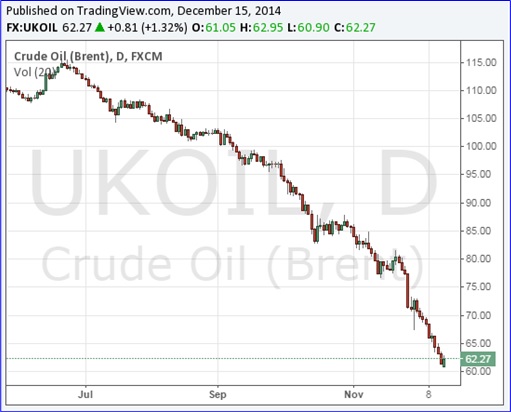
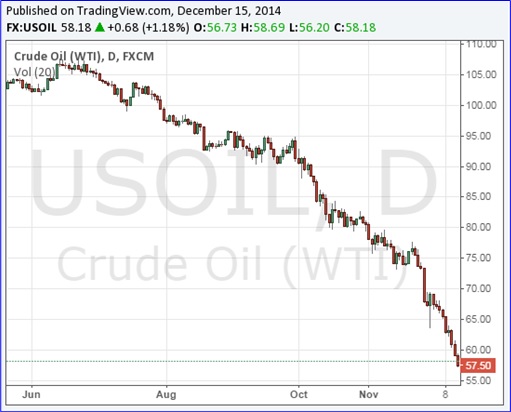
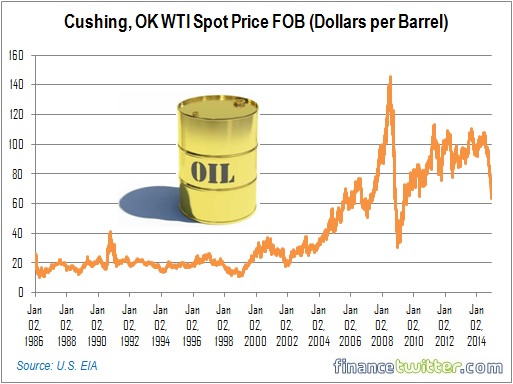
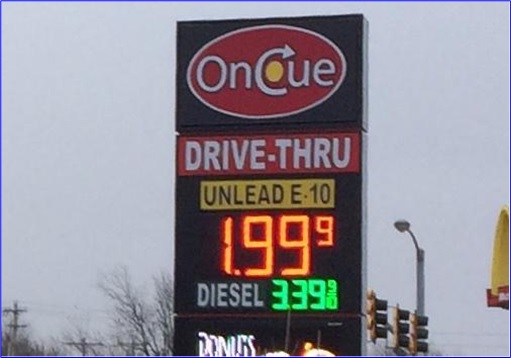
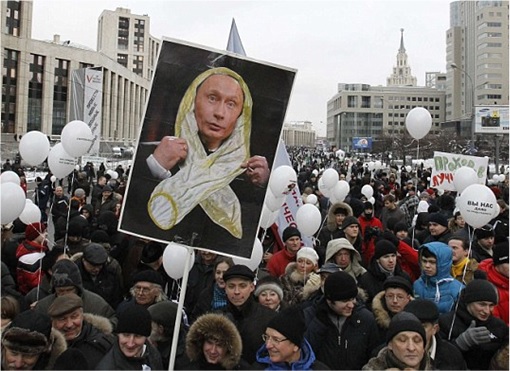
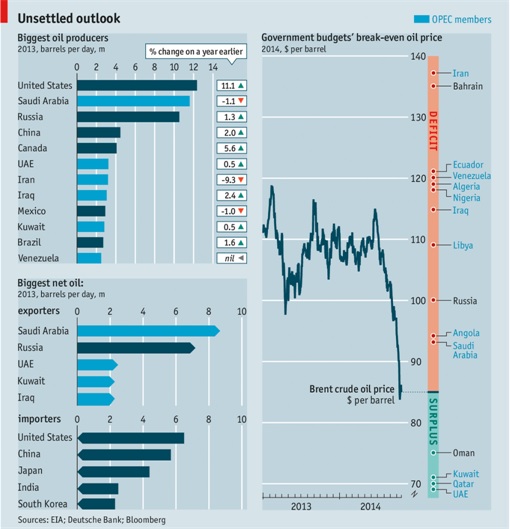






















Comments
Add your comment now.
Leave a Reply